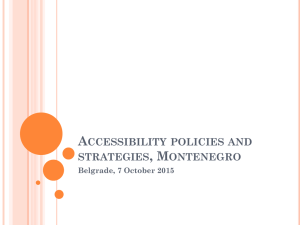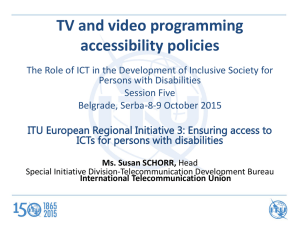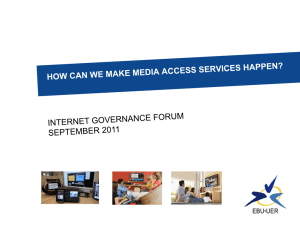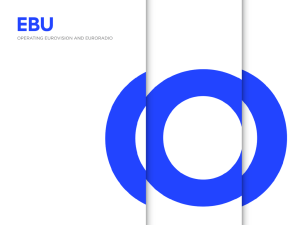Web analytics
advertisement
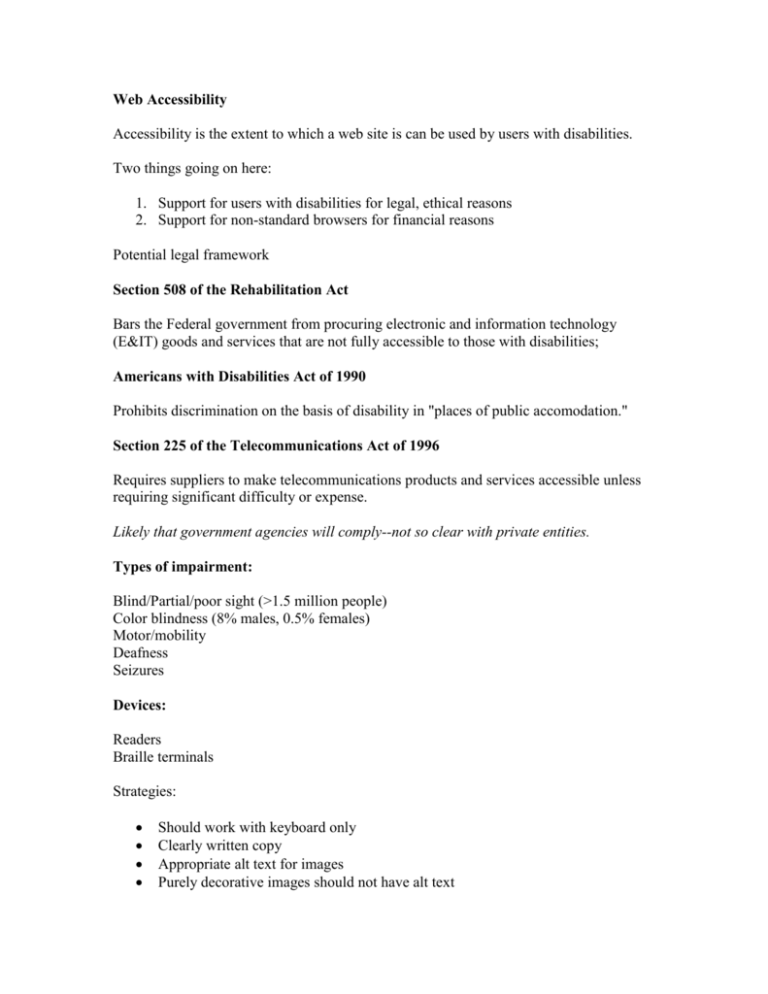
Web Accessibility Accessibility is the extent to which a web site is can be used by users with disabilities. Two things going on here: 1. Support for users with disabilities for legal, ethical reasons 2. Support for non-standard browsers for financial reasons Potential legal framework Section 508 of the Rehabilitation Act Bars the Federal government from procuring electronic and information technology (E&IT) goods and services that are not fully accessible to those with disabilities; Americans with Disabilities Act of 1990 Prohibits discrimination on the basis of disability in "places of public accomodation." Section 225 of the Telecommunications Act of 1996 Requires suppliers to make telecommunications products and services accessible unless requiring significant difficulty or expense. Likely that government agencies will comply--not so clear with private entities. Types of impairment: Blind/Partial/poor sight (>1.5 million people) Color blindness (8% males, 0.5% females) Motor/mobility Deafness Seizures Devices: Readers Braille terminals Strategies: Should work with keyboard only Clearly written copy Appropriate alt text for images Purely decorative images should not have alt text Provide text alternatives to multimedia content (e.g., transcripts for audio) Good contrast in design Color cannot be the only means to communicate something Text navigation as primary or alternate Skip navigation link Page titles that describe purpose or topic Link text provides information about link Document usable with javascript disabled Documents readable without style sheet Audio controls (ability to stop audio) Avoid flashing content between 2 and 55 Hz
